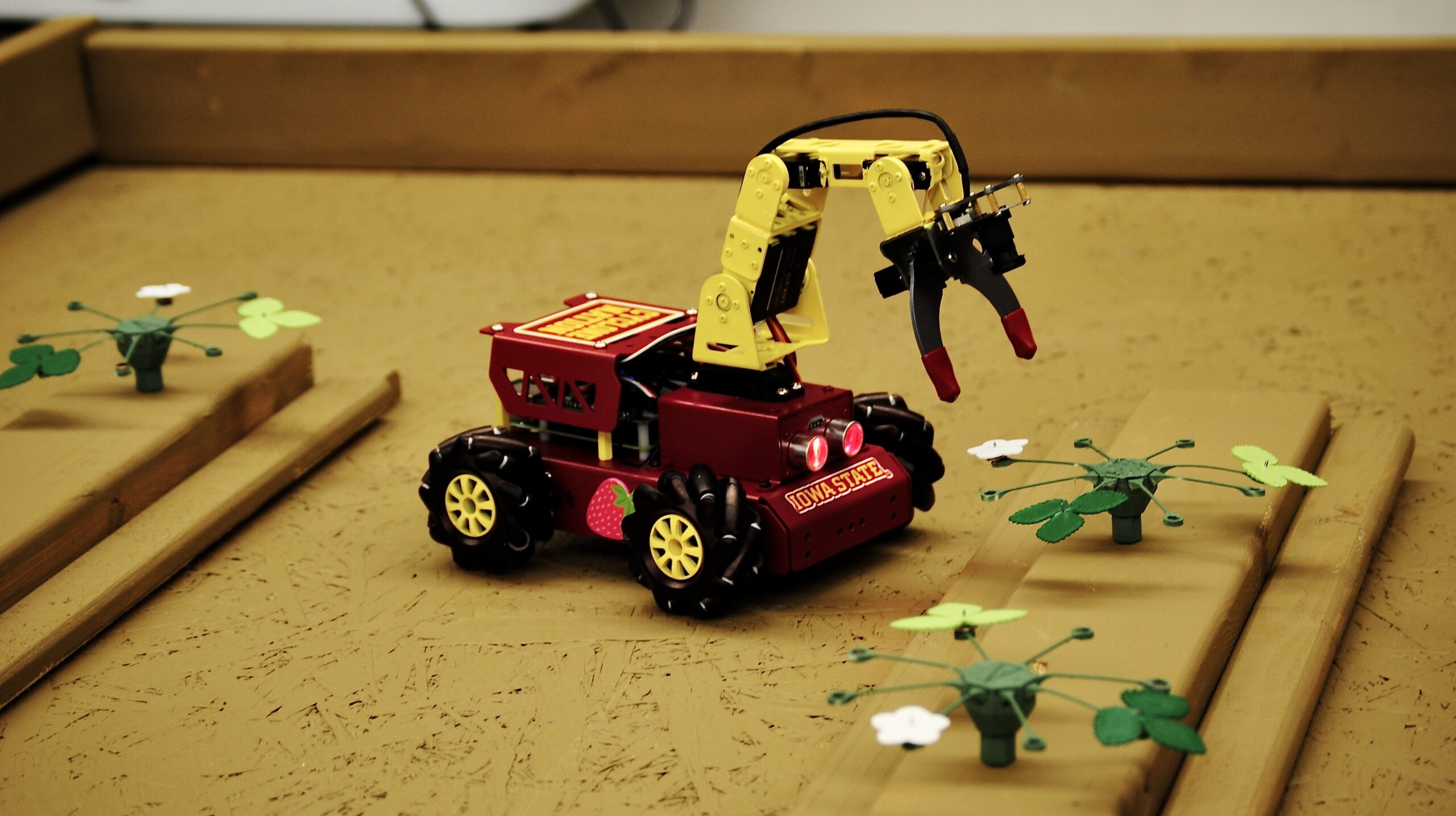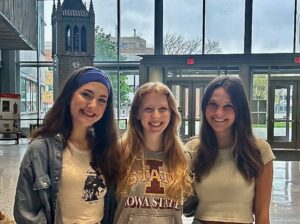The little Cyberry that could: ASABE Robotics Competition
Author: Caden Schweitzer
Author: Caden Schweitzer

 The annual American Society of Agricultural and Biological Engineers (ASABE) Robotics Competition happens at the ASABE International meeting; this year, the team will head to Anaheim, California. Three students from the Department of Agricultural and Biosystems Engineering (ABE) are working on programming a robot for the competition. Undergraduates Allison Singer and Ellen Halbur, studying biosystems engineering, and Elise Henrichsen, studying agricultural engineering, were recruited by Associate Professor Joshua Peschel to represent Iowa State in the upcoming competition.
The annual American Society of Agricultural and Biological Engineers (ASABE) Robotics Competition happens at the ASABE International meeting; this year, the team will head to Anaheim, California. Three students from the Department of Agricultural and Biosystems Engineering (ABE) are working on programming a robot for the competition. Undergraduates Allison Singer and Ellen Halbur, studying biosystems engineering, and Elise Henrichsen, studying agricultural engineering, were recruited by Associate Professor Joshua Peschel to represent Iowa State in the upcoming competition.
“It has been a joy to watch these students develop individually in their roles and as a team over the last year. Each exhibits the qualities we deeply value in our students: drive and excellence in the classroom and a strong commitment to our profession through their activities on this project,” said Peschel.
Each member of the team has stepped into different roles, and they have collaborated well in their time working on the robot.
“Elise is really good at the research aspect, Ellen is great at design, and I like putting things together for the robot. All of us together make a good combo,” said Singer.
Creation of Cyberry Shortcake
The robot is scored based on how many 3D-printed strawberry leaves it can identify as different from the rest and the time it takes to do so. The team is still in the process of coding and developing their robot, affectionately named Cyberry Shortcake.
“There are trial runs of the leaf identification that we can do and test to make sure that the settings of our coding are specific to that environment,” said Henrichsen.
The process of creating and coding the robot has opened new opportunities for the team members for the future. Experience with robot vision and new technologies in the agriculture field has equipped these students with tools for their futures.
“This experience has introduced me to the use of robots in agriculture which is continuing to expand as technologies improve. I have become more interested in the field of robotics and look forward to learning more about the topic and possible career paths involving agricultural technology,” said Henrichsen.